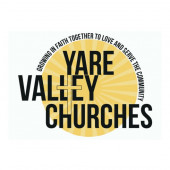History of St Michael & All Angels
The church of St Michael and All Angels, a Grade 1 listed building, stands alone on Braydeston Hills. Its surrounding churchyard, a haven for birds and other wildlife, looks down over farmland and up to the wide Norfolk sky.
A church at Braydeston is mentioned in the Domesday Book of 1086 and almost certainly stood on the current site. Part of the exterior wall on the south side showing the faint outline of a doorway since filled in with flint, is possibly of Saxon date. A little to the west of this is another ancient doorway, now bricked in, of a later date. As with most old churches, the original building has been altered and repaired many times over the centuries.
The church is now entered through a sixteenth century porch on the north side. Of interest here is the stone seating topped with wood. At some time in the distant past, people have carved a Nine Men’s Morris board together with several outlines of shoes. It may have been used as a schoolroom at one time.
Much of what can be seen of the church building inside is of the 13th/14th centuries. On the south side can be seen vestiges of pillared arcading, indicating that at one time there was either a south aisle or chapel, long since vanished. The stone shelf, piscina for the washing of hands and sedilia (seating for the clergy) in the chancel are thought to be of that date and the font at the west end of the church dates from around 1340.
The tower is of a later date as are most of the windows. In 1440 John Berney, an important local landowner and friend of the famous Paston family, left money in his will for the erection of this tower. It has a claim to fame: of the hundreds of mediaeval church towers in Norfolk, only 3 have a ‘fireplace cum bread oven’ in them and Braydeston church is one of them. It is thought that the sacred wafers for communion were baked in this. The church’s one remaining bell was donated by a William Palmer of Norwich around the same time and is inscribed in Latin, translating as “This bell was made to praise the good saints”. There were two others, sold in 1762 to raise much needed funds.
